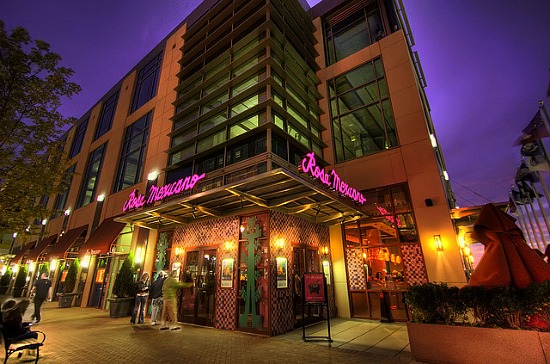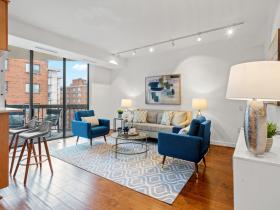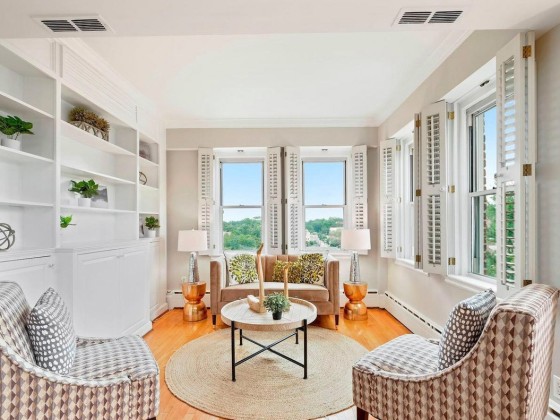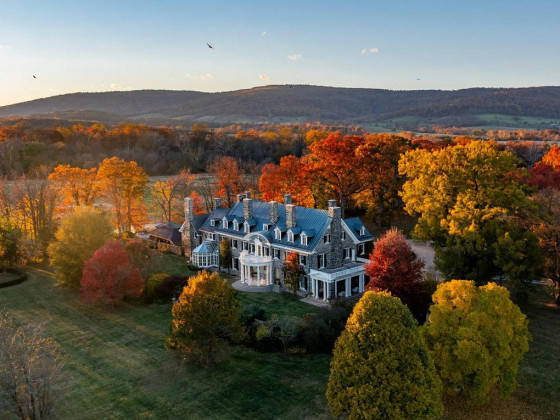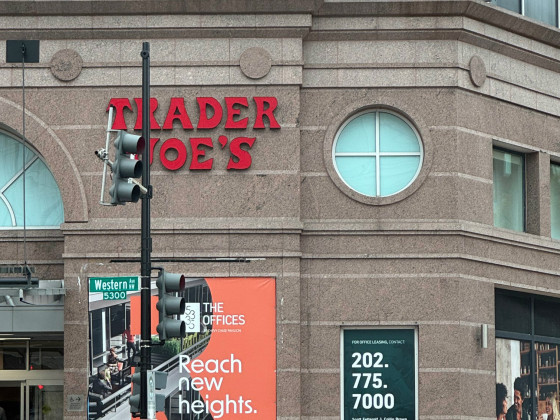 National Harbor: A Development Rises Next to the Potomac
National Harbor: A Development Rises Next to the Potomac
✉️ Want to forward this article? Click here.
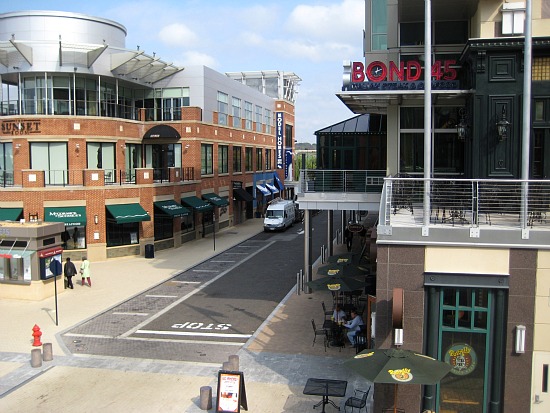
National Harbor
Ten years ago, there wasn’t much to see on the eastern bank of the Potomac River just south of the Woodrow Wilson Bridge. These days, however, the area is home to National Harbor, a 300-acre swath of hotels, restaurants, and shops that receives millions of visitors a year.
Less well known is the area’s role as a residential community, but National Harbor includes over 400 condo units, and more housing is slated to be built in the coming years. The residents that UrbanTurf spoke with gushed about the benefits of living at National Harbor, but its spanking-new ambiance and distance from central DC aren’t for everyone. As Chris Richardson, a real estate agent who’s lived there for eighteen months explained, those who choose to live at National Harbor are specifically seeking the amenities it offers.
“Living over here, you’re buying into a lifestyle, and you know that coming into it,” he said.
A Brand-New Gathering Spot
Located in Prince George’s County almost directly across the river from Old Town, Alexandria, National Harbor opened in 2008 to much fanfare. The vision of Milton Peterson, a Northern Virginia real estate mogul who was behind the redevelopment of downtown Silver Spring, National Harbor is anchored by the Gaylord Hotel and Convention Center, a 2,000-room hotel with over 470,000 square feet of meeting space.
Although National Harbor is already receiving almost 1.8 million conference attendees a year, more hospitality development is on the way; The Walt Disney Company purchased 15 acres last year in National Harbor and plans to build a 500-room hotel resort in the near future (although no timeline has been set). National Harbor’s jewel is its waterfront, a wide expanse fronted by two long public piers and the Awakening, the statue of a partially-buried man that formerly lay at Hains Point.
East of the waterfront are several commercial streets topped by condominiums, hotels and office space, studded with flags, clusters of benches, sculptures, and other works of art.
Fleet Street, One National Harbor, and Waterfront Street
So far, residential options in National Harbor are limited to three condo buildings: Fleet Street, One National Harbor, and Waterfront Street. In total, the buildings hold 423 units, 80 percent of which have been sold and are already occupied, according to Chris Masters, director of marketing for McWilliams|Ballard.
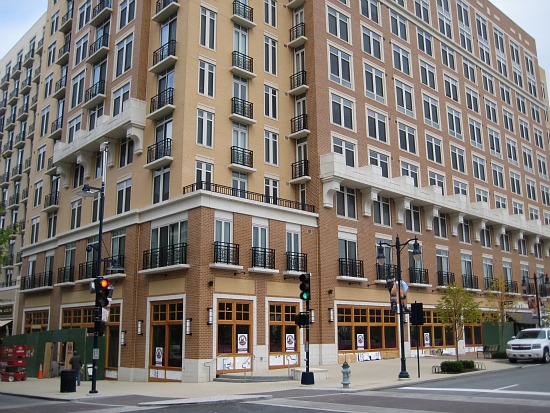
One National Harbor
One National Harbor is the largest of the three developments and is currently 85 percent occupied. Like Fleet Street across the street, the building features one, two, and three-bedroom units, many of which have large windows, hardwood floors, and private balconies. Prices for units in both buildings start in the low $200,000s for studios, mid-to-upper $200,000s for one-bedroom units, low $400,000s for two-bedrooms, and low $500,000s for three-bedroom condos.
Waterfront Street, meanwhile, is distinctly more luxurious. All of the condos have views of the water, floor-to-ceiling glass windows at both ends, and their own private elevator that opens into the unit. These two and three-bedroom condos start in the high $800,000s and all have at least 1,800 square feet of interior space.
Not the Ghost Town That Some People Think
Despite relatively reasonable prices for studio and one-bedroom condos, National Harbor residents tend to be financially comfortable, Chris Richardson explained.
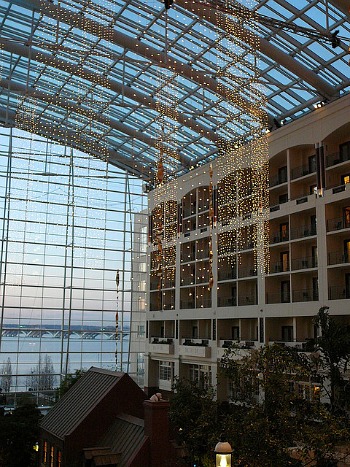
Inside Gaylord Hotel
“Most of the people living here have done well and [the condo] is not going to be a starter home,” he said, adding that residents include retirees and empty nesters, as well as some young professionals.
Presently, fewer than 500 people live in National Harbor, which might make the area feel like a ghost town to some. But with its constant flow of convention-goers and other visitors, Richardson said the area doesn’t feel empty.
“It’s hard to tell the difference between tourists and neighbors, and there’s always something going on.” National Harbor regularly hosts jazz concerts and other music performances, and it has a weekly market selling crafts and produce as well as a holiday market in December.
Though National Harbor does have child-friendly amenities, including a few climbing areas and kid-centric shops, there aren’t too many strollers or toddlers crowding the sidewalks. That might be the result of the area’s relative isolation from other neighborhoods, or its lack of playgrounds and green space (though there is a dog park for four-legged residents). Those children who do live at National Harbor attend Prince George’s County public schools like Fort Foote Elementary School, Oxon Hill Middle School, and Oxon Hill High School.
Restaurants, Shops and Bars, But Not Too Many Everyday Amenities
The few square blocks of National Harbor are packed with restaurants, a number of which are familiar to DC residents, including McCormick and Schmick’s, Rosa Mexicano, Cake Love, Bond 45 (an Italian steak and seafood place with a sibling in Times Square), McLoone’s Pier House Restaurant, and Sauciety. The majority of the restaurants feature American cuisine (possibly to please conventioneers’ palates) and so far, few have received stellar reviews from diners.
Still, Avis Vesely, 58, who’s lived in One National Harbor with her husband for the past year and half, said she’s happy with the selection. “There’s just about anything you want, and many restaurants have a discount for residents.”
As for other services, though, National Harbor is a little behind. A CVS and small grocery store are currently being built, but the area doesn’t include other typical community amenities like a barbershop, movie theater, or gas station.
Calm and Quiet
While there have been questions as to whether crime might eventually spill into National Harbor from surrounding areas, so far, residents say they feel comfortable and very safe.
A research study conducted this summer by the Peterson Companies, which runs National Harbor, found that 98.9 percent of patrons said they felt safer at National Harbor than in other areas where they shop and eat.
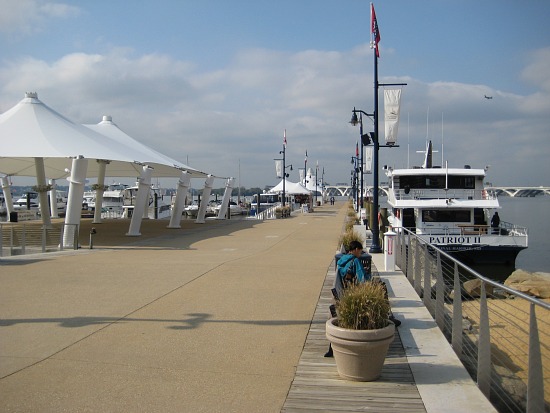
The Harbor
Time to Get to Know Your Gas Cap
Despite its easy walkability, National Harbor virtually demands that residents own a car. While there are alternative forms of transportation including the twice-hourly NH1 Metrobus that connects to the Branch Avenue Metro on the Green Line, a water taxi with stops in Old Town and Georgetown, and a bike trail along the Woodrow Wilson Bridge to Alexandria, none of these are feasible on a daily basis. They simply cost too much, either in time or money.
If you’ve got a car, though, National Harbor has direct road access to the Beltway and I-295, and the George Washington Parkway and I-395 are close. Debbie Clark, who works on Capitol Hill and has lived at National Harbor for more than a year, said her commute usually averages 20 minutes.
The Bottom Line
With its distance from other urban areas, very small population, and work-in-progress character, National Harbor clearly isn’t your typical DC area neighborhood. But for anyone looking to live in a nascent community where you could conceivably meet half of the community’s population within a few months, National Harbor could be an ideal fit.
Amanda Abrams is a Washington, DC-based journalist who has written feature stories for The Washington Post, Christian Science Monitor, and Washington City Paper.
More Info on National Harbor
- Zip code: 20745
- National Harbor Website
See other articles related to: dclofts, hoods, national harbor
This article originally published at https://dc.urbanturf.com/articles/blog/national_harbor_a_development_rises_next_to_the_potomac/2658.
Most Popular... This Week • Last 30 Days • Ever

UrbanTurf takes a look at the options DC homeowners and residents have to take advant... read »

A major new residential development is on the boards for a series of properties near ... read »

A new report from DC’s Office of Revenue Analysis highlights how millennials and wo... read »

The building is the second proposal for a pair of aging office buildings in downtown ... read »

The central action before the Board is a rezoning request for the nearly 36-acre site... read »
- A Solar Panel Primer for DC Residents
- 29-Story, 420-Unit Development Pitched For Middle Of Downtown Bethesda
- How DC's Population Changed During And After The Pandemic
- Fitting In: A Narrow 260-Unit Apartment Building Pitched For Bethesda
- Arlington County To Weigh Major Actions Advancing RiverHouse Redevelopment
DC Real Estate Guides
Short guides to navigating the DC-area real estate market
We've collected all our helpful guides for buying, selling and renting in and around Washington, DC in one place. Start browsing below!
First-Timer Primers
Intro guides for first-time home buyers
Unique Spaces
Awesome and unusual real estate from across the DC Metro
